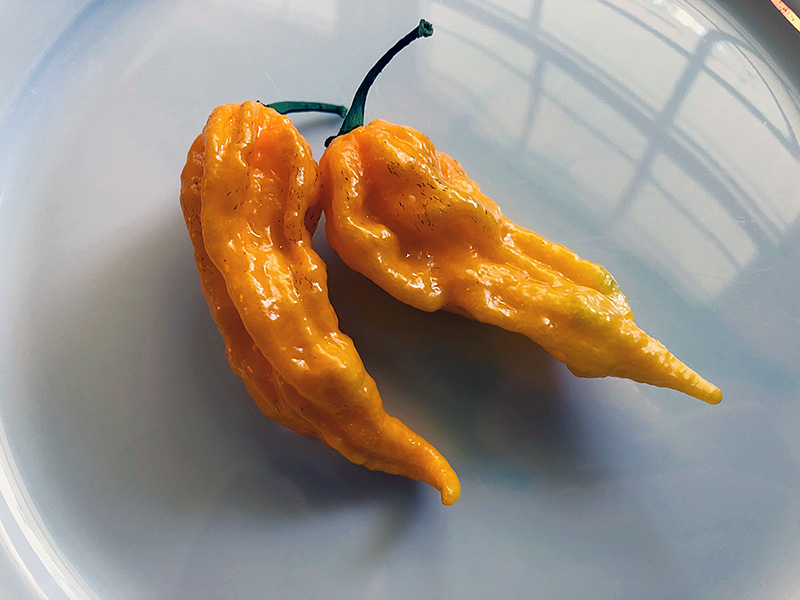Fatalii Pepper Review
The Fatalii pepper hails from Central Africa and has become an unsung favorite of many growers throughout the years. It’s combination of flavor and heat make for a versatile culinary element. And now, finally, after several years of attempting to grow this classic pepper, I finally get to experience all that for myself.
Over the past few years, I’ve purchased seed for the Fatalii from a variety of sources – some quite reputable, others not so much. Each year I faced the same empty starter pot, staring at the barren dirt as the seeds failed to germinate again. For 20201, however, I finally got a couple of seeds to pop and, with great excitement and care, I babied the hell out of those plants until the first ripened fruit were harvested.

My particular plant produced dozens of consistently sized and shaped pods. As you can see above, these things look pretty gnarly, each stretching to almost three inches in length with wrinkled and lightly bumpy yellow skin. Inside, I was surprised by the lack of placenta and seeds. There’s just the tiniest bit huddled around the stem end of the fruit.
The Fatalii unleashes a pungent aroma immediately upon slicing it open. It’s lightly floral, displays a distant fruitiness and hit of sweetness. Hints of the heat to come dominate. The flavor is floral and moderately bitter – both of which fade quickly – with a light fruitiness. A hint of grass lingers.

The heat is almost immediate, arriving a split second after the first bite. It brings a full-on mouth burn with a heated focus on the tongue. Swallowing induces a good bit of whiskey chest. At its peak, the heat is extreme, but without the stinging sensation many superhots bring to the party. For all the heat the Fatalii delivers, it’s quite a pleasant experience as the burn fades slowly from the plateau.
It’s easy to see why the Fatalii is a favorite pepper for many growers. The flavors and burn are versatile and can be used in just about any application from powders to sauces. I’m just glad that I finally was able to experience this plant and look forward to growing it again in the future.